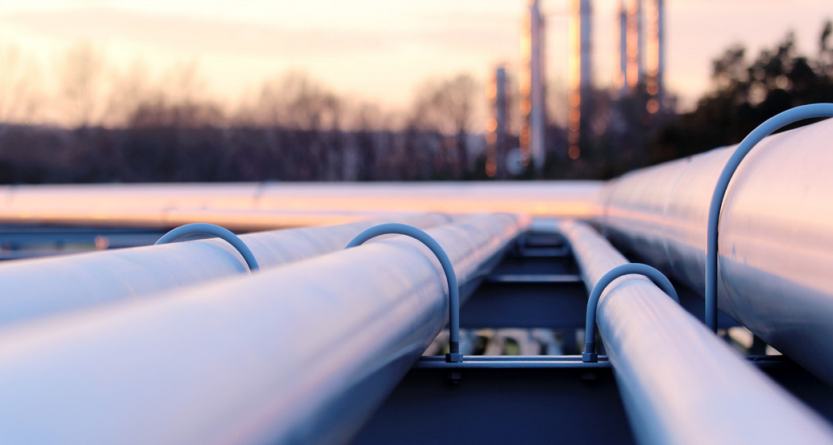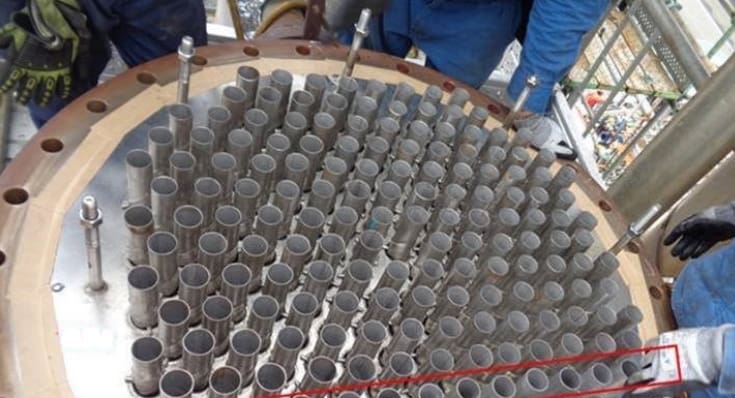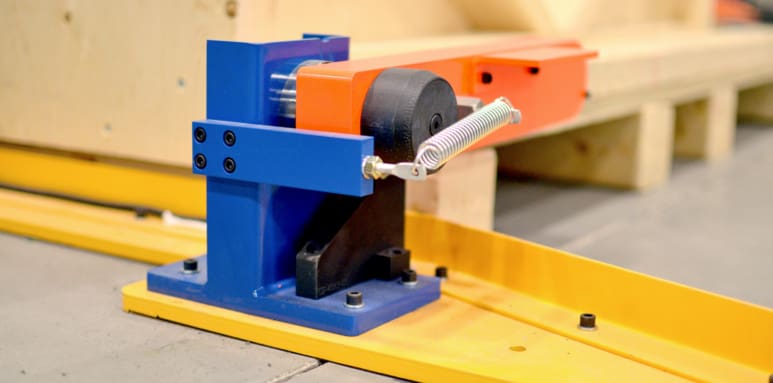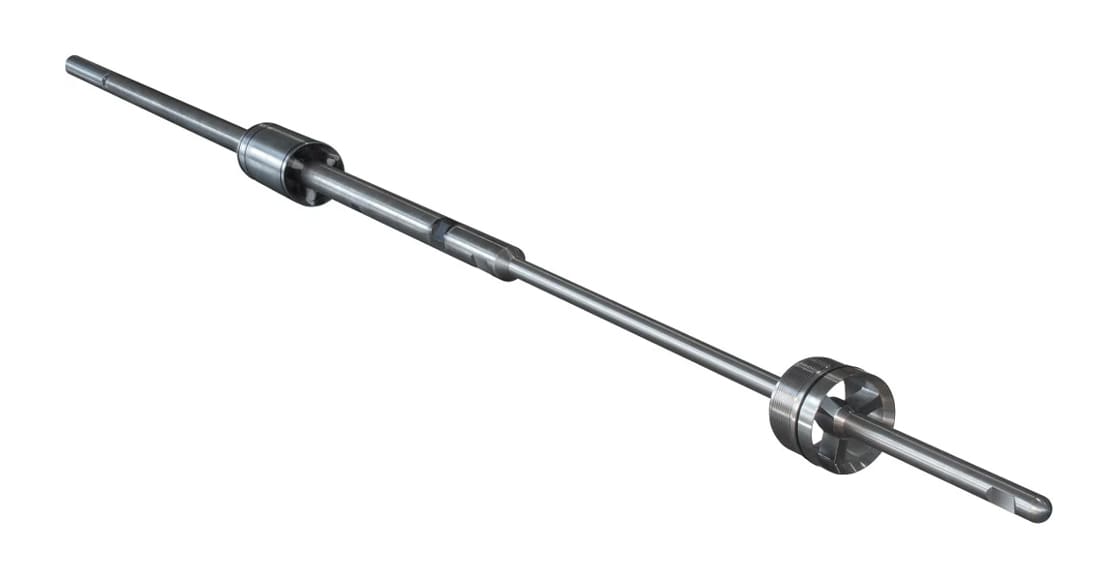The major players in the oil and gas (O&G) industry from Chevron and Shell to BP and GE are slowly but steadily adopting industrial 3D printing for their critical parts for several reasons ranging from quicker and cheaper spare parts to better functioning component designs only possible through 3D printing (aka additive manufacturing) technology.
Just a day of downtime can cost O&G producers hundreds of thousands of dollars in lost revenue while lead times for spare parts are usually extremely long — if the parts are available at all. To mitigate this, companies maintain huge inventories of potentially underperforming parts, often at a great cost.
3D printing is ideally positioned to supply the industry with digital inventories and on-demand spare part production especially in remote, offshore locations, where the ability to produce parts on-demand essentially eliminates supply chain issues.
The oil & gas industry’s need to maintain productivity leaves little opportunity to upgrade component designs and innovate. Additive manufacturing not only enables better and more efficiently designed parts, but also, as a rapid prototyping technology, it can vastly accelerate product development.
Critical parts in this industry need to withstand immense punishment and the harshest environments. Confidence in 3D printing materials, methods, and processes has boosted recently with new standards and certifications that ensure 3D printed parts match required specifications in this regulated industry.
Let’s explore how additive manufacturing is disrupting oil & gas production and take a look at freshly established standards that cover 3D printed equipment parts. We’ll also detail several examples of how current producers are applying the technology, from off-shore facilities to pipeline manufacturing.
New Certifications Set to Boost 3D Printing in O&G

Before we get into specific application examples, it’s worth highlighting some significant recent developments in certifying 3D printed parts for the oil and gas industry. Two significant new standards introduced in 2021 are paving the way for wider adoption of additive manufacturing in the industry.
DNV, the international classification society founded in 1864, introduced a technical standard in March (DNVGL-SE-0568) that sets safety and efficiency specifications for 3D printed products, assets, and systems in O&G and general energy production. DNV says additive manufacturing “could help to avoid long, expensive production shutdowns and reduce supply-chain carbon footprints” so it created standards to support the industry as it adopts AM technology to gain cost and efficiency benefits.
DNV has been investigating the opportunities and challenges posed by additive manufacturing since 2014. In 2017, DNV published the first guideline for the use of additive manufacturing in the maritime and oil & gas industries. A year later, DNV opened a Global AM Center of Excellence to serve as an incubator and test bed for research and development in 3D printing technology for the oil and gas, offshore, and maritime sectors.

The American Petroleum Institute (API) introduces its new standard in October to drive the adoption of 3D printing to optimize natural gas and oil component design for drastically reduced lead times and drive efficiency, safety, and technological advancements across all segments of the industry, the organization said in a statement.
This new standard, called “Additively Manufactured Metallic Components for Use in the Petroleum and Natural Gas Industries”, introduces three additive manufacturing specification levels to set requirements for the technical, quality, and qualification requirements of 3D printed metallic components. In addition, it establishes requirements for training, inspection, monitoring, and measuring equipment, as well as material testing and quality control.
Although this particular standard only concerns metal components, organization says it’s currently working on a complementary standard for plastic components.
“This new standard expands API’s best-in-class safety and efficiency requirements and supports cutting edge operations, helping producers to deploy new 3D printing technologies to meet rising global demand for natural gas and oil products,” said Alexa Burr, API’s VP of segment standards and services for global industry services.
Standards such as these are an acknowledgment of 3D printing’s growing role in O&G production while market data provides further proof that the technology’s significance will only increase.

3D printing in O&G is projected to be worth $32 billion in 2025, with a further increase to $60 billion expected by 2030, according to industry research. Behind the market’s growth is the O&G industry’s increasing need for complex equipment designs to boost operational efficiency as it competes with growing competition form other energy sectors. In fact, 82% of O&G companies say they intend to implement 3D printing in the next 12 months, according to research by on-demand additive manufacturer Protolabs, which is certified by DNV to produce parts for the industry.
3D printing is quickly turning from a fringe technology to a requirement within the O&G sector. Let’s now take a look at specific examples of how the industry is applying 3D printing today.
3D Printing in O&G Today
3D Printed Hydraulic Systems

British engineering company GKN used 3D printing to develop a new, optimized hydraulic block — an essential component of hydraulic systems. Traditionally, hydraulic blocks are rectangular components with multiple inner channels to control oil distribution.
However, traditionally manufactured hydraulic blocks have significant drawbacks, such as high machining costs, inefficient oil flow, dirt accumulation, and potential for leaks and ruptures.
The 3D printed hydraulic block optimizes the design, doing away with the rectangular shape while still retaining the same functionality. The new design has no dead corners where dirt can accumulate, which also improves oil flow efficiency, according to GKN.
The hydraulic block also features homogenous wall thicknesses and shorter oil channels, both of which reduce leakage risk. As a cherry on top of it all, the 5.5-kg 3D printed block is whopping 80% lighter than the traditionally manufactured 30-kg block.
In another development in the hydraulic space, 3D printer manufacturer Desktop Metal acquired Italian hydraulic systems producer Aidro in September 2021. Aidro is well-known for its innovative 3D printer hydraulic solutions, and Desktop Metal says it aims to harness the Aidro team’s experience in developing new products.
On top of hydraulic blocks, Aidro has developed an additively manufactured hydraulic manifold for agricultural machinery. This redesigned manifold cut weight by 35%, consolidated a two-part component into one to save time and costs on assembly, and improved the structure of the internal channels, delivering higher energy efficiency.
3D Printed Tool Slips & Pistons

After more than three decades manufacturing parts using traditional methods for the oil and gas, aerospace and robotics and automation industries, Texas-based PGV Oil Tools looked to next-generation manufacturing solutions, like metal 3D printing using the Desktop Metal Shop System.
In less than a year, the system has enabled PGV to reduce lead times by 50-80%, reduce physical inventory by 50% and also allowed PGV to expand and grow its business by freeing up internal production capacity and simplified inventory management – all of which have added up to more agile, efficient operations.
By opening the door to on-demand production of parts, the Shop System allowed PGV to reduce their parts inventory by as much as 50 percent. Rather than warehousing and tracking large numbers of parts, designs can be stored in “digital warehouses,” and be retrieved and printed only when needed.
Slip parts are key components in a production packer used in oil and gas extraction. After being lowered into place, the wedge-shaped slips are pressed into place, causing the “buttons” on the face of the slip to bite into the inside casing of the well, forming a tight grip so the tool won’t release or move while under pressure. Once in place, tools slips can face intense pressure, so it was critical these parts be strong enough to withstand those forces.
The material properties of Shop System parts ensured these tool slips are able to perform under real-world conditions. Because the Shop System eliminates the need for tooling, PGV is able to manufacture these slips in far less time than it would take to machine the parts, allowing the company to dramatically reduce their inventory of spare parts. The company is also able to easily adjust the design of this part to suit different scenarios, and send the new design into production without delays.
PVG also used 3D printing for tubing anchors, pistons, and other critical parts.
3D Print Tough Downhole Components Faster

Downhole applications — parts of the oil drilling process that happen within the borehole or well — are among the most demanding within the oil and gas sector. The parts used downhole encounter extreme abrasion from grinding through rock and contact with harsh liquids, whether raw oil or water-soil-chemical slurries.
Duncan Machine Products (DMP), a U.S.-based company supplying precision-machined parts to the O&G industry, partnered with 3D printing company Velo3D to deliver 1,500 parts for downhole applications, both for onshore and offshore exploration.
For this project, DMP replaced traditional investment casting with Velo3D’s Sapphire metal 3D printer. Billings said that after testing the technology, they found it highly suitable for downhole parts production due to shorter lead time and better part performance.
“We chose Velo3D because their Sapphire printer can handle the most geometric complexity, and their support-less process doesn’t require customers to redesign their parts,” says Chris Billings, DMP co-owner.
In another case, O&G downhole tools producer Ulterra was looking to extend the service life of its drill rotors and stators. To achieve these results, Ulterra partnered with 3D printer manufacturer ExOne, now a part of Desktop Metal.
Using ExOne’s metal AM technology, Ulterra printed 10 rotors measuring 3-5 inches using an S4 stainless steel and bronze matrix. The 3D printed parts exhibit superior wear-resistance, showing no measurable wear even after 600 hours of use, the company says. They are also significantly cheaper compared to conventional machining, lowering the price per rotor from about $400 to $75.
First-Ever 3D Printed O&G Waterbushing

Waterbushings are essential safety-critical components used in O&G drilling that attach to the top of the drill pile or tubing to connect with the mud system. They allow drilling mud to circulate and counter hydrocarbon kicks, which could destroy drilling equipment.
In April 2021, French tubing and piping supplier Vallourec made history by delivering the first-ever 3D printed waterbushing to the O&G industry. Printed using Wire Arc Additive Manufacturing (WAAM), the 1.2-meter tall and 220kg component started successful operation at a TotalEnergies offshore rig in the Elgin-Franklin gas fields in the North Sea.
“Additive manufacturing has the potential to revolutionize the O&G supply chain by enabling companies like Total to order made-to-measure components as and when they are needed,” says Andrew Heddle, drilling & wells QA/QC lead at Total exploration & production UK.
Manufacturing the waterbushing using WAAM not only cut lead times but also helped make the part lighter. The 3D printed component weighs only roughly half as much as its traditionally manufactured predecessor. To top it all off, Vallourec notes that 3D printing the component reduced carbon emissions by 45% compared to traditional forging and machining.
“Additive manufacturing enables us to move one step closer to the industry goal of a digital warehouse, increasing availability of crucial parts and reducing waste. The aim of this project was to go beyond proof of concept to successfully develop the quality assurance and quality control frame of supply for components using WAAM technology,” says Bertrand Maillon, AM business development manager at Vallourec.
Shorter Lead Times on Pipeline Clamp

Short lead times are key in the oil & gas industry, as both reducing production downtime and decreasing environmental, human and safety risks are critical. The current lead time of pipeline repair can be as long as 2 to 3 weeks with a potential lost value of several 100k to 1 million euros per day. Current repair processes by clamps typically rely on CNC milling, specialized manual labor, or a combination of both. Each of these processes has its downsides. CNC milling has high material waste (on average about 80% of the original material) and specialized laborers are becoming more scarce.
Dutch metal additive manufacturing firm MX3D, in collaboration with Team Industries and TiaT, produced an industrial-grade pipeline clamp to demonstrate their technology’s applicability in O&G.
Custom-designed pipeline clamps are used to extend the service life of O&G installations and to prevent pipeline incidents. As such, they must comply with rigorous safety and performance standards and often require very short lead times.
Using a hybrid WAAM production method, the 3D printed pipeline clamp is faster to produce and can be manufactured locally, removing delivery times from the equation. The part is also more accurate and generates less waste material during manufacturing.
The additively manufactured clamp was tested against ASTM A370 standards by third-party agencies. The clamp met or exceeded the properties of a traditionally manufactured part.
“Hybrid additive manufacturing combines both the advantages of conventional manufacturing, such as precision and high production speed of ‘simple’ parts, with the advantages of additive manufacturing, such as geometrical freedom, production speed, and minimal material waste. The WAAM Clamp quality and complexity showcase the potential of the technology,” said Thomas Van Glabeke, MX3D’s project lead and R&D manager.
Record-Breaking Heat Exchanger Tubes

3D Metalforge, a Singapore-based additive manufacturing company, announced in early November 2021 that it had successfully delivered 3D printed heat exchanger parts to Royal Dutch Shell. The components have been put to use at the Shell Jurong Island (SJI) petrochemical manufacturing site.
The production processes at SJI rely on large-scale heat exchangers, which contain an array of metal tubes for heat regulation. As the facility is located on a remote private island, lead times for spare tubes can be extremely long, forcing SJI to maintain an extensive inventory. Shell partnered with 3D Metalforge in an attempt to remedy the situation.
Prior to starting manufacture, 3D Metalforge worked closely with Shell engineers to outline the heat exchanger’s performance requirements. The company designed the components’ digital models based on Shell’s specifications. The parts underwent integrity testing during post-production to ensure they lived up to all relevant quality standards.
“The components were successfully installed and completed in the record time of two weeks, and the printed parts resulted in a lead time reduction,” 3D Metalforge says. The 3D printed tubes are also more cost-effective to manufacture and help extend the lifespan of existing machinery.
“We appreciate 3D Metalforge for their exceptional technical services and their timely and successful delivery of quality parts to Shell Jurong Island”, said Pina Joshi, Asset Rejuvenation Senior Reliability Engineer in Shell Jurong Island.
3D Print Parts for Custom Machines

Shawcor, a Canadian oilfield services company, uses heavy tape pads to reinforce pipe segments. The pads, weighing between 115 and 230 pounds, are too large for individuals to handle, and as such the company wanted to build a new machine to handle them. However, they were running into issues with traditional manufacturing methods.
The tape pad handling machine required custom-made parts. Not only were they prohibitively expensive, the three- to six-week delivery time meant the plant would operate only at 85% efficiency.
To resolve this problem, the Canadian company turned to Markforged, a manufacturer of thermoplastic 3D printers that reinforce parts by feeding continuous carbon fiber, fiberglass, or Kevlar into them so they are as strong as metal but much lighter. With the Markforged Mark Two, a desktop-size FDM 3D printer, the energy firm has now printed 53 unique parts for the pad handling machine, including fuse covers, sensor mounts, and bump stops.
Due to the printer’s fiber reinforcement technology, the company has been able to replace metallic parts with plastic ones. “For shock-loaded parts, we chose Kevlar or HSHT fiberglass, and for parts we wanted to be more rigid, we chose carbon fiber. People were blown away by the overall quality; they never thought they’d see printed parts being put on machinery that’s actually going to be used in a production manufacturing environment,” said Phil M., a Senior Mechanical Designer at the energy firm.
All in all, 3D printing the parts has saved the company roughly $19,000. They can now also print new parts for the machine overnight and install them the next morning.
Streamline Drill Turbine Production

Equipment manufacturer APS produces various components for oilfield drilling applications, including steerable drill motors, sensors, vibration dampers, and Measurement While Drilling (MWD) systems. The company had previously tried additive manufacturing to produce some of these parts, but they kept running into the same issue — the materials weren’t tough enough to withstand the intense abrasion of drilling operations.
Then German 3D printing company EOS offered their metal DMLS 3D printing solutions to APS. This new manufacturing method allowed APS to explore previously impossible, more efficient geometries while producing parts from durable metal alloys.
“Traditional manufacturing methods have got us this far, but the improved efficiencies of parts created with DMLS are game changers,” says Paul Seaton, APS VP of marketing. “It creates a domino effect, where longer product life spans lead to less disruption for equipment maintenance, greater drilling time, and lower costs.”
One of the components that now uses 3D printed metal parts is a five-stage turbine that powers a steerable drilling head. Each turbine contains several end housings, stators, and rotors that are performing in real-life conditions. 3D printing has allowed APS to consolidate these traditionally multi-part components into one, while also cutting lead times from up to weeks to overnight printing.
Investment Demonstrates Industry Recognition

UK-based Hunting, which makes upstream equipment for the wellbore, including downhole tools and components, acquired a 27% stake in Texas 3D printing firm Cumberland Additive Holdings this year for $5 million.
Cumberland uses powder bed fusion 3D printing technology to produce accredited, high-performance parts for demanding sectors, such as O&G, aerospace, and defense. This investment demonstrates O&G companies’ increasing recognition of additive manufacturing as the key tool in pushing the industry forward.
“Hunting’s investment in CAH is a key part of our strategy to access new manufacturing technologies which are being adopted by our current customers, but also provides new market and customer opportunities in sectors complementary to our core competencies of precision engineering and strongly quality-assured products and procedures,” says Hunting CEO Jim Johnson.
“The Group was attracted by CAH’s materials and process engineering know-how and expertise which we believe will complement our existing engineering and manufacturing leadership in our chosen sectors of focus,” he added.
Lead image source: Offshore oil rig (Source: European Space Agency)
License: The text of "3D Printing Set to Transform Oil & Gas Industry" by All3DP Pro is licensed under a Creative Commons Attribution 4.0 International License.